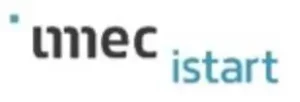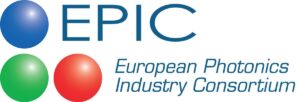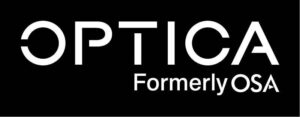Designing nanostructures and meta-atoms
PlanOpSim allows straightforward and fast simulation of the nanostructured building blocks of meta-surfaces. Any design of a meta-lens or other planar optics component starts with the design of the meta-atoms.
The nanostructures are modeled by a full wave solution of Maxwell’s equations. The unit-cell of a structure is surrounded by periodic boundaries.
A popular class of meta-atoms are rectangular columns of high index material. The rectangular shape allows to control phase of circularly polarized light by the rotation of the fins in the substrate plane. The distance between structures is below a single wavelength to suppress diffraction. The strucure in this example was proposed in the paper by Khorasaninejad et.al. (DOI 10.1126/science.aaf6644). It consists of titanium dioxide nanofins on a soda-lime glass substrate.
PlanOpSim uses the rigourous coupled wave analysis method to rigoursly and rapidly simulate the response of a nano-fin. The structure used is shown in the figure on the left. The first optimization step is to tune the height of the TiO structure to act as a half wave plate, converting the incident right handed circular polarized light to left handed circular polarization. For the simulation wavelength the maximum polarization conversion is found for a thickness of 650nm.
We then use this thickness to model the relative phase differences for the different rectangle rotations. The plot on the right illustrates the Pancharatnam Berry relation that the relative phase retardation is twice the in-plane angle of the structure. So a series of rectangles with rotations between 0-180 degrees provides full control over the phase of the transmitted light over the entire 0-360 degree range. Khorasaninejad and colleaguess then go on to construct a meta-lens using these structures.
Diffraction gratings are often used as in- or outcoupling structures between light travelling in freespace and a waveguide structure. Slanted gratings like the one in on the left below are attractive because they can provide almost 100% diffraction efficiency into the 1st diffraction order. With PlanOpSim’s full wave solverthe diffraction can be accurately and quickly modelled. The center and right pictures show the changes in diffraction efficiency with the spectrum and angle of incidence of the incoming beam.
Slanted and blazed gratings are an interesting structure for coupling light into waveguides for head mounted displays for instance in virtual and augmented reality (VR & AR) headsets. The calculations above were executed within 5 minutes on a standard laptop.
PlanOpSim can be used to simulate the profile of electric fields inside a complicated nanostructure. You can easily analyze the profile of the components of the electric and magnetic field. These profiles allow you too find the regions of strong electric field in the nanostructure where the light-matter interaction is the strongest.
In the example below the reflection and transmission of the Si cantilever structure in the insert is simulated. Karvounis et. al. used this structure to engineer a strong optomechanical response from a flaoting Si layer. By pumping the structure with a modulated beam at 1550nm the cantilever structure can be made to tilt up to 10 degrees. This can be sensed by a probe beam at 1310nm. The forces acting on the cantilever can be calculated from the electric field components.
You can find the full paper here:
1. Karvounis, A., Ou, J. Y., Wu, W., Macdonald, K. F. & Zheludev, N. I. Nano-optomechanical nonlinear dielectric metamaterials. Appl. Phys. Lett. 107, (2015).




© 2024 PLANOPSIM.COM | All rights reserved